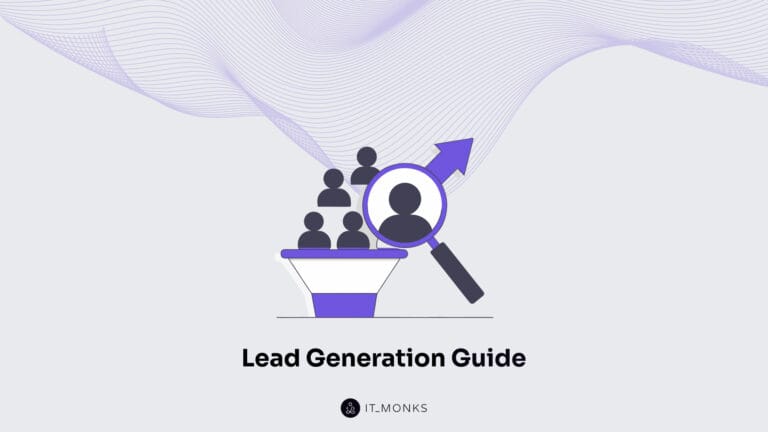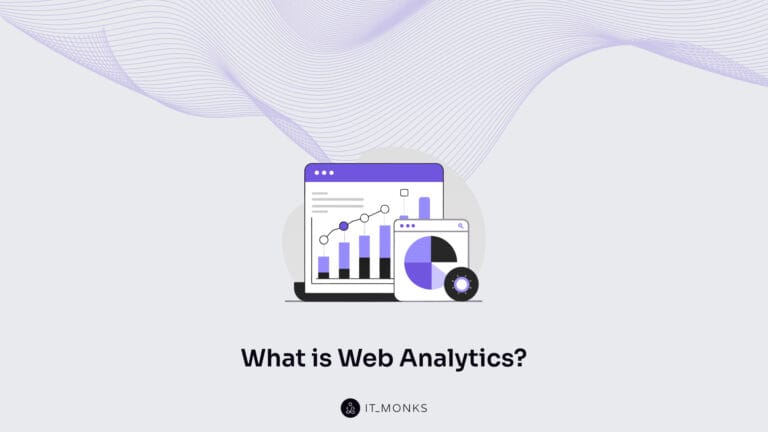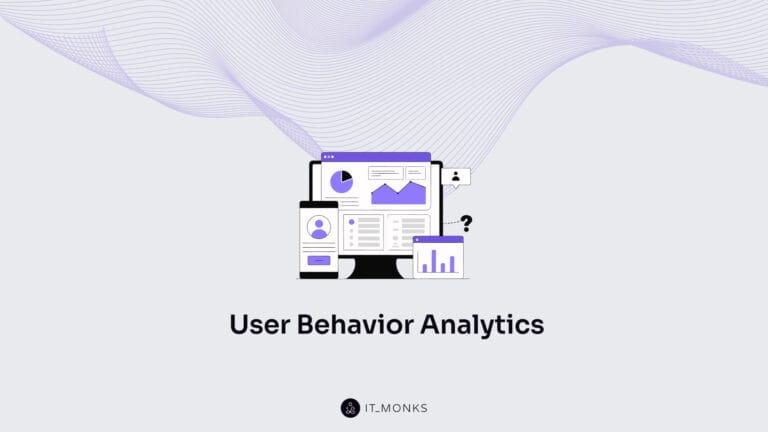Compliance Requirements for Enterprise Hosting
Table of Contents
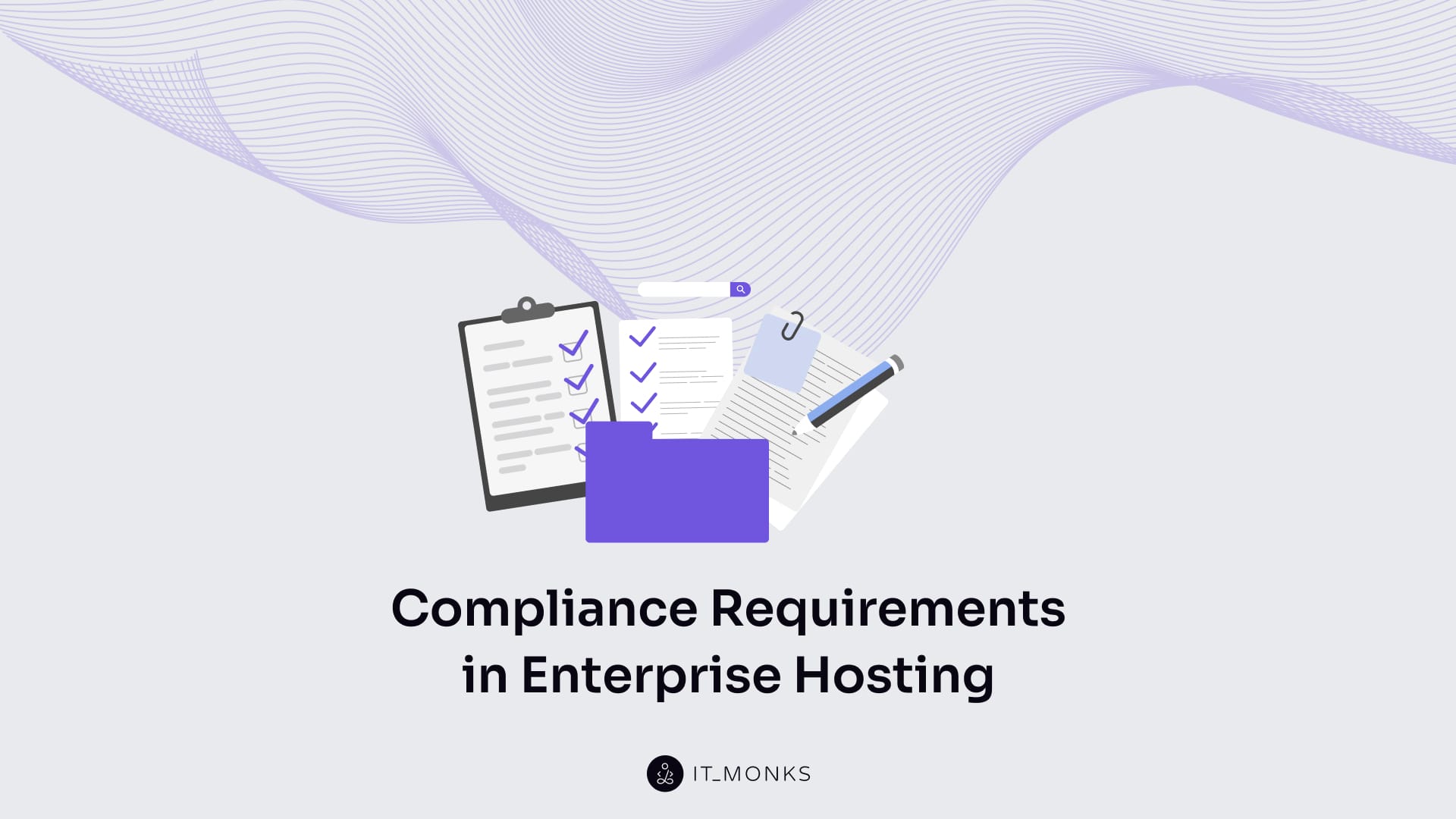
Compliance requirements are the legal, technical, procedural, and contractual standards that enterprise-level hosting services must meet to stay aligned with industry regulations and data governance policies. These rules ensure that hosting environments meet industry standards, regulatory frameworks, and data governance protocols, providing secure, lawful, and auditable digital infrastructure operations.
Compliance frameworks such as GDPR, HIPAA, SOC 2, and PCI-DSS impose precise technical mandates that only hosting providers can enforce at the infrastructure level. These include encryption protocols, access restrictions, network segmentation, geo-fencing, and log retention.
If encryption isn’t validated, if logs aren’t retained, if access isn’t restricted, compliance is invalidated.
Hosting providers become contractually and operationally accountable for compliance enforcement. They must prove that encryption is applied, log every access event, document breach incidents, and expose audit trails to third-party reviewers.
SOC 2 and ISO 27001 certifications validate that enterprise hosting providers enforce control coverage and uphold process integrity. Breach notification timelines (e.g., ≤72 hours) require them to be responsive to operations. Log retention guarantees (12+ months) preserve audit traceability. And region-specific data segregation enforces residency and sovereignty in line with geopolitical mandates.
This architecture defines hosting as a compliance control plane; the surface where all regulatory enforcement, proof of adherence, and risk insulation must occur. Without it, enterprise websites face systemic exposure: legal, operational, and reputational.
Why Hosting Compliance Matters for Enterprise Websites
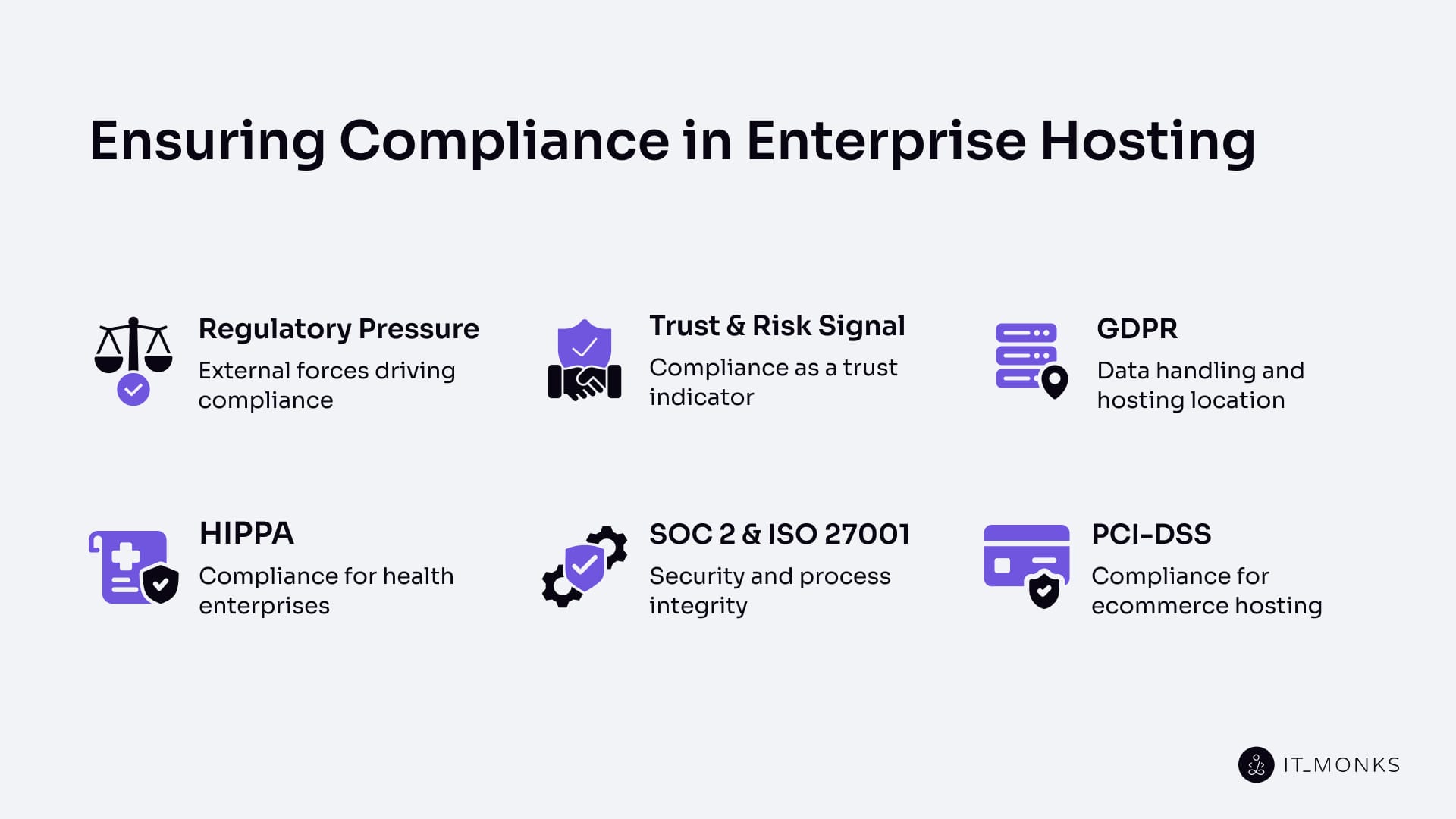
Compliance enforcement at the hosting layer directly determines the operational legitimacy of enterprise websites. Regulatory requirements (GDPR, HIPAA, SOC 2, and PCI-DSS) bind not to the application layer, but to the hosting infrastructure where control surfaces exist. This is where access is restricted, encryption is applied, logging is retained, and breach response timelines are either met or violated.
Enterprise websites operate under a dependency model: if the host satisfies the compliance mandate, the site retains its legitimacy. If the host fails, the site becomes non-compliant by extension, regardless of intent.
A breach in Service Level Agreement (SLA)-bound controls, such as access logging or geolocation restrictions, doesn’t stay confined to the infrastructure; it propagates upward. The audit fails. The trust score drops, regulatory fines land. Market access disappears. Certification lapses at the infrastructure level immediately invalidate the operational integrity of the dependent enterprise systems.
That’s why platforms built on web hosting for enterprise must map compliance responsibilities directly into infrastructure behavior. Certification, audit readiness, logging, encryption aren’t optional extras. They are structural requirements that determine whether the site is legally valid, whether user data is lawfully handled, and whether customers continue to trust what they see.
Regulatory Pressure on Hosting Infrastructure
Regulatory pressure on hosting infrastructure refers to the direct and enforceable obligations imposed on enterprise hosting providers by global compliance mandates. These are codified expectations that name hosting environments as the technical enforcement layer.
Hosting providers operate under binding jurisdictional requirements that demand more than uptime or availability; they require proof of access control, encryption, data locality, breach response, and real-time audit readiness.
Frameworks such as GDPR, HIPAA, PCI-DSS, and SOC 2 don’t abstract hosting; they scope it.
GDPR mandates data processing transparency and geolocation controls that must be implemented directly at the infrastructure level.
HIPAA requires hosting platforms to enforce and document access logs for a minimum of six years.
PCI-DSS mandates encryption at both rest and in transit. These are not guidelines. They are technical mandates imposed at the infrastructure tier dictated by law, enforced by audit, and validated through third-party certifications.
Hosting providers must document and expose their control systems to maintain compliance. That means real-time logging, encrypted storage validation, failover integrity, and breach notification windows of ≤72 hours, not just policy statements but enforceable guarantees embedded in SLAs. Hosting environments are not just assessed, but also audited.
Certifications such as SOC 2 or ISO 27001 are contingent upon evidence that resides within the infrastructure, if that evidence is missing or invalid, the certification fails.
These responsibilities come with legal accountability. Through shared responsibility models, Data Processing Agreements (DPAs), and contractual enforcement clauses, infrastructure vendors are named parties in compliance chains. When failure occurs (whether it’s unauthorized access, delayed breach disclosure, or insufficient logging) liability doesn’t stop at the enterprise site. It traces directly back to the infrastructure provider.
Compliance as a Trust & Risk Signal
Compliance as a trust and risk signal means that hosting-layer enforcement of regulatory mandates is more than a legal checkbox; it’s a quantifiable indicator of operational integrity, vendor reliability, and organizational credibility. Hosting compliance creates a measurable surface of assurance that auditors, procurement systems, regulatory bodies, and search engines alike read.
External stakeholders interpret visible certifications, SLA guarantees, and log availability as proof that a platform can process sensitive data without introducing unnecessary risk.
A SOC 2 Type II certification isn’t just an internal document; it’s a vendor signal in procurement portals. ISO 27001 validation reflects the maturity of security governance. SLA-backed guarantees for breach notification, access control, and logging are essential criteria in risk scoring models used by enterprise procurement teams and compliance officers.
Hosting infrastructure becomes the risk indicator, not just the backend. If audit logs aren’t accessible, if data localization isn’t verifiable, or if encryption fails, the vendor risk profile spikes. Risk isn’t theoretical; it’s modeled, calculated, and reflected in metrics: audit pass rates, procurement thresholds, SLA penalties, certification lapse alerts. The ability to show, validate, and expose compliance posture directly impacts how the enterprise is evaluated by partners, legal teams, and external reputation frameworks.
In web development for enterprise contexts, this trust signal becomes an active market force. Search engines factor compliance posture into visibility decisions, particularly for data-sensitive verticals like healthcare, finance, and B2B SaaS. HTTPS, GDPR compliance, and breach disclosure history directly influence algorithmic trust scoring and the stability of results.
What matters isn’t that compliance exists; it’s enforced at the infrastructure level and publicly referenceable. Certifications, logs, and enforcement evidence must be maintained and exposed. Trust isn’t built through claims; it’s built through SLA-bound, audit-grade infrastructure that proves it can handle compliance and withstand scrutiny.
Key Regulatory Frameworks and Standards
Key regulatory frameworks and standards define specific, enforceable mandates that hosting providers must implement at the infrastructure level to support enterprise website compliance. These mandates are framework-bound obligations embedded in contracts, certifications, and audit controls.
Multiple overlapping regulatory frameworks govern enterprise hosting providers, each targeting distinct data types, business sectors, and jurisdictional scopes.
- GDPR enforces geographic data residency and transparency for personal data within the EU.
- HIPAA binds hosting providers to enforce and log safeguards for ePHI in healthcare.
- SOC 2 and ISO/IEC 27001 certifications ensure operational integrity and control enforcement across all trust categories.
- PCI-DSD dictates strict access and segmentation rules for cardholder data environments in ecommerce.
GDPR for Data Handling & Hosting Location
GDPR for data handling and hosting location defines binding obligations for infrastructure-level enforcement of data protection, regional residency, access control, and breach disclosure timelines.
Under the GDPR, hosting providers are classified as data processors, legally bound to implement technical safeguards that protect the data of EU residents. This includes Article 28 and 32 obligations for encryption, access restriction, and proof of processing transparency. Hosting providers must implement geofencing and regional hosting enforcement to satisfy data residency requirements. EU data must remain in EEA-approved jurisdictions.
The infrastructure must support access audit logging, breach detection, and encryption at rest and in transit. Logs must be retained for at least 12 months and made available to regulators upon request. Breach incidents must be disclosed within 72 hours, and all access must be restricted to authorized roles with documented control configurations in place.
Compliance is validated through Data Processing Agreements (DPAs), which explicitly outline the processor’s responsibilities. If hosting providers fail to enforce the policy, the liability cascades to the enterprise website, even if the frontend behavior aligns with the policy. GDPR doesn’t care about intent; it demands technical execution, logged control, and audit exposure at the infrastructure layer.
HIPAA Compliance in Hosting for Health Enterprises
HIPAA compliance in hosting for health enterprises binds infrastructure providers to enforce federally mandated controls for ePHI storage, access, transmission, and breach handling.
Under HIPAA’s Security Rule (45 CFR § 164.312), any hosting provider that processes or stores electronic protected health information (ePHI) is classified as a Business Associate. This role comes with enforceable obligations, formalized through a Business Associate Agreement (BAA) that assigns direct legal accountability to the infrastructure provider.
Required safeguards include unique user IDs, role-based access control, emergency access procedures, AES-256 encryption at rest, TLS 1.2 or higher for transmission, and tamper-evident log retention for a minimum of 6 years. The provider must monitor access, document real-time activity, and ensure that the principle of minimum necessary access is enforced.
If a breach occurs, notification must be made within 60 days, and audit records must support the response documentation. Without verifiable proof from the host, the enterprise healthcare site becomes noncompliant, regardless of application logic or frontend posture. HIPAA compliance is infrastructure-led, audit-scoped, and legally enforced.
SOC 2 and ISO 27001 for Security & Process Integrity
SOC 2 and ISO/IEC 27001 certifications are formal proofs of control enforcement, process discipline, and infrastructure-level compliance in enterprise hosting environments.
SOC 2 Type II audits validate the hosting provider’s adherence to the Trust Services Criteria (TSC), including Security, Availability, Processing Integrity, Confidentiality, and Privacy. Over a 6–12 month audit window, the provider must demonstrate continuous control enforcement, log retention, incident handling, and role-based access mapping.
ISO/IEC 27001 complements SOC 2 by requiring a documented Information Security Management System (ISMS). The provider must maintain a risk treatment plan, map control objectives to Annex A, and deliver ongoing monitoring, documentation, and third-party assessment.
Enterprise websites that operate on certified infrastructure inherit audit eligibility, control maturity, and trust scoring advantages. The absence of certification results in vendor rejection, procurement delays, and increased audit exposure. These frameworks aren’t checklists; they’re mandatory infrastructure validations. Without them, compliance posture collapses under scrutiny.
PCI-DSS for Enterprise Ecommerce Hosting
PCI-DSS for enterprise ecommerce hosting mandates that hosting providers enforce infrastructure-level controls for storing, processing, or transmitting Cardholder Data (CHD).
PCI-DSS compliance is only possible when the hosting provider enforces strict segmentation, isolates the Cardholder Data Environment (CDE), and restricts admin access using role-based controls and multi-factor authentication. Infrastructure must support TLS 1.2+ encryption for data in transit, AES-256 encryption at rest, and maintain file integrity monitoring (FIM) to detect unauthorized modifications.
All privileged activity must be logged and retained for ≥12 months, with 3 months immediately accessible. Hosting providers must deliver quarterly vulnerability scans, annual penetration tests, and produce a valid Attestation of Compliance (AoC) or Report on Compliance (ROC) from a certified QSA.
PCI-DSS does not stop at the payment form; it scopes the whole stack. If the hosting provider misconfigures access, skips segmentation, or fails to produce documentation, the entire ecommerce site falls out of PCI scope, exposing the merchant to fines, chargebacks, and card network sanctions. Enterprise ecommerce compliance begins and ends in the infrastructure.
Hosting Infrastructure’s Role in Maintaining Compliance
Hosting infrastructure serves as the enforcement layer that operationalizes compliance, binding regulatory requirements to the technical behaviors that sustain lawful, auditable enterprise environments. It is not a passive foundation, but an active control system that executes encryption, logging, region control, and access segmentation in real-time.
Compliance with frameworks such as GDPR, HIPAA, SOC 2, PCI-DSS, and ISO/IEC 27001 is only possible when the infrastructure enforces the required safeguards: AES-256 encryption at rest, TLS 1.2 or higher in transit, 12-month log retention or longer, geo-fencing, and access isolation.
A compliant enterprise site inherits its posture from the hosting environment beneath it, including breach detection within 72 hours (GDPR), access controls mapped in BAAs (HIPAA), and logging aligned to PCI-DSS Req. 10/11.
Hosting platforms must prove encryption, retain logs, segment data flows, and monitor anomalies within SLA-bound timelines. Without these controls enforced at the infrastructure level, compliance becomes unverifiable, and audit readiness collapses.
This also reinforces a core tenet of enterprise web security: compliance is not merely a documentation exercise, it’s a requirement for systems behavior. Misconfigurations, missing controls, or expired certificates don’t just increase risk; they eliminate legal defensibility.
Data Sovereignty and Region Control
Data sovereignty enforcement begins at the hosting layer, where infrastructure must restrict data residency to compliant jurisdictions. Hosting providers are required to guarantee that all data storage, processing, and replication activities occur exclusively within legally approved regions, not just for convenience or latency optimization, but as a binding condition for regulatory conformance.
GDPR mandates that data about EU citizens must reside within the EEA or EC-approved jurisdictions, with Article 44 prohibiting unauthorized transfers to third countries. HIPAA, meanwhile, restricts the handling of ePHI to US-based systems unless specific legal exceptions are met. The financial, defense, and education sectors impose similar constraints, all of which are enforced through infrastructure behavior, rather than application logic.
The hosting provider must implement region-locked storage, jurisdiction-bound failover, and geo-restricted logging. This includes geofencing backup systems and ensuring that encryption key vaults are located in the same sovereign boundary as the primary data. Cross-border replication violates data localization requirements and immediately breaks audit traceability. Enterprise websites inherit their legal alignment from the infrastructure on which they’re hosted, whether or not their developers are aware of where the bytes reside.
Providers must offer data center options segmented by jurisdiction, explicitly contract data localization in DPAs, and document enforcement through audit logs and system-level diagrams. Any infrastructure that fails to prevent cross-region replication or storage automatically exposes the enterprise to regulatory penalties, loss of certification, and service interruption under audit.
Without regional control, there is no assurance of sovereignty, and without that assurance, frameworks like GDPR and HIPAA are already compromised before the first user hits the site.
Encryption and Data Retention Policies
Encryption and data retention are core pillars of compliance enforcement at the hosting layer. Regulatory frameworks do not ask whether these controls exist; they demand proof that they’re configured, enforced, and continuously verifiable.
Hosting providers must encrypt all data in transit using TLS 1.2 or later and ensure that data at rest is secured via AES-256 or a stronger encryption algorithm. This is not optional. PCI-DSS mandates full encryption of cardholder data both in motion and at rest. HIPAA’s Security Rule (§164.312) enforces encryption of ePHI wherever “reasonable and appropriate,” which translates operationally into baseline encryption enforcement across all storage systems. GDPR (Art. 32) also considers encryption a mandatory risk reduction control, applicable to both storage and transit.
Retention obligations are equally strict. Access logs, admin activity, and breach indicators must be retained for ≥12 months under PCI-DSS and SOC 2. HIPAA mandates 6-year retention for ePHI access and security logs. GDPR retention varies by country and processing purpose. Still, it uniformly requires the ability to delete or provide records on demand, which means data lifecycle governance must be built into the infrastructure.
Hosting providers must document encryption enforcement, support configurable retention schedules, and provide evidence of retention and deletion mechanisms for audits. Gaps (such as logs that aren’t retained, backups without encryption, or data that can’t be expired on command) are not policy failures; they are compliance violations.
If the host can’t encrypt, retain, and delete by legal and sector-specific mandates, no amount of application-layer discipline will protect the enterprise from regulatory failure.
Access Control & Logging Requirements
Compliance frameworks uniformly require that access to sensitive data be restricted, controlled, and fully logged at the infrastructure level. These are not best practices; they are structural mandates with direct audit implications.
Hosting infrastructure must enforce role-based access control (RBAC) to ensure only authorized users can reach specific systems. All privileged accounts must use multi-factor authentication (MFA), and unique user IDs must be assigned and recorded; no shared credentials, no anonymous admin actions. Every access event must be logged with a timestamp, user ID, IP address, and access path. That log must then be retained in tamper-evident storage for the defined duration specified in the applicable framework.
HIPAA (§164.312), PCI-DSS (Req. 7–10), SOC 2, and GDPR (Art. 32) all impose non-negotiable access and logging controls. PCI-DSS requires logs to be retained for 12 months, with 3 months immediately accessible. HIPAA mandates a 6-year log retention period, and SOC 2 requires continuous, event-level monitoring.
The hosting provider must segregate access roles (operations, support, backups) and ensure that log integrity is validated via hashing or WORM storage. Auditability depends on proving who accessed what, when, and how, and log unavailability or tampering equals instant audit failure.
Enterprise sites do not manage access control at the infrastructure level; they inherit those controls from the host. If those controls are weak, misconfigured, or unverifiable, compliance cannot be demonstrated, and no certification body will overlook it.
What to Look For in a Compliant Hosting Provider
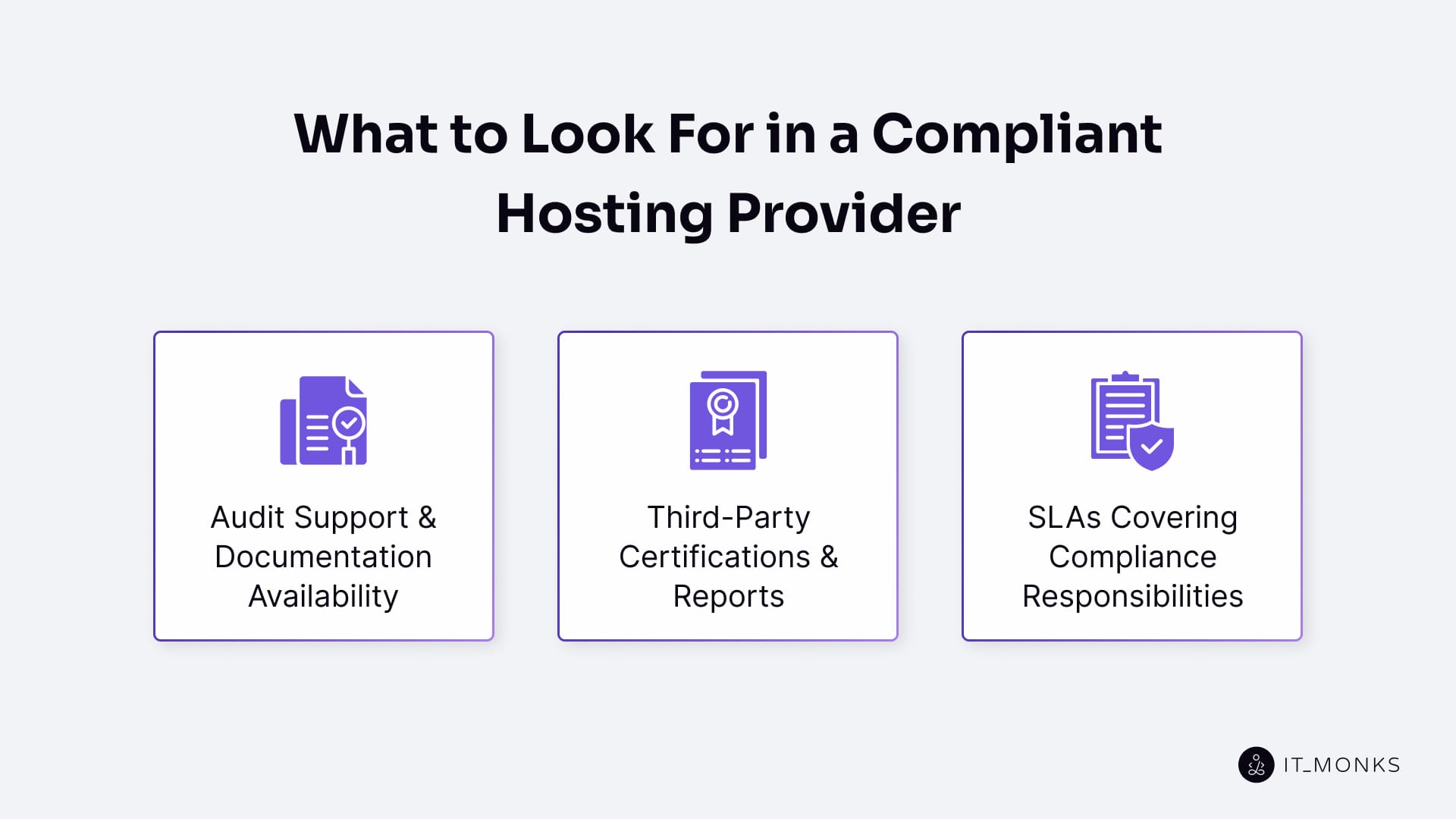
A hosting provider’s ability to support enterprise compliance is proven through documentation, certifications, and contract terms.
In regulated environments, infrastructure-level behaviors must be audit-backed, standards-mapped, and contractually enforced. Marketing labels like “secure hosting” or “compliance-ready” are functionally meaningless unless supported by explicit audit visibility, third-party certification coverage, and enforceable SLA language.
Compliant hosting infrastructure must deliver on three critical dimensions: audit support, certification validation, and SLA-bound guarantees. Providers must furnish SOC 2 Type II reports, ISO/IEC 27001 certifications, and PCI-DSS attestations of compliance that map directly to their infrastructure controls.
Next, providers must offer on-demand access to tenant-specific audit logs, breach history documentation, and configuration state data. In frameworks like HIPAA and SOC 2, the absence of log visibility is itself a compliance violation. Certifications must include proof of scope, timing, and control alignment, especially for critical domains like encryption, access control, and data localization.
Additionally, a compliant host must bind itself to the obligations it claims through a legally enforceable Service Level Agreement (SLA). This includes RTO/RPO values, breach notification windows (e.g., ≤72 hours), region-specific data residency guarantees, and explicit audit cooperation clauses. If any of these are missing, vague, or “out of scope,” the provider cannot be considered compliant, regardless of uptime stats or support tier.
Enterprise teams evaluating providers should treat any undocumented claims as non-existent and any non-certified hosts as a compliance risk. As outlined in this enterprise hosting selection guide, due diligence begins with proof, not promises.
Audit Support & Documentation Availability
Audit support and documentation availability refers to the hosting provider’s mandatory role in delivering verifiable, time-bound evidence of infrastructure control enforcement across regulated environments.
This includes system logs, access records, vulnerability scans, and certification reports, all mapped to frameworks like SOC 2, HIPAA, and PCI-DSS. If this documentation can’t be produced on demand, audit posture collapses and compliance fails by default.
A compliant hosting provider must furnish current third-party audit reports (including SOC 2 Type II, ISO/IEC 27001, and PCI-DSS penetration tests) with mapped infrastructure controls. Beyond certifications, the provider is obligated to deliver detailed audit support assets: access maps, vulnerability scan results, compliance control matrices, and logging policies. These are not optional resources. They are the documented proof of the provider’s enforcement behavior.
Crucially, audit evidence isn’t just something available in theory; its delivery must be time-bound by SLA. HIPAA stipulates a 30-day requirement for the delivery of evidence. SOC 2 audits depend on multi-month logging availability. PCI-DSS mandates quarterly scan results and complete visibility of the audit trail. Hosting providers must enable customer-side audit workflows by exposing tenant-specific logs, configuration snapshots, and control state documentation within defined response windows (e.g., ≤72h for GDPR-aligned incidents).
If the hosting infrastructure can’t produce documentation on demand, the enterprise loses its ability to enforce control. Compliance breaks at the point of audit unavailability, and no backend control can salvage it. In a regulated environment, audit support is an operational requirement.
Third-Party Certifications and Reports
Third-party certifications and reports are formal, externally audited validations that a hosting provider’s infrastructure meets the technical control requirements of specific regulatory frameworks.
SOC 2 Type II, ISO/IEC 27001, PCI-DSS AoC, and HIPAA documentation form the baseline, but only if they’re current, in-scope, and map directly to the environments hosting enterprise workloads. Expired badges, missing scopes, or audit mismatch result in disqualification.
The baseline set of required reports includes:
- SOC 2 Type II: Verifies sustained enforcement of controls related to Security, Availability, and Confidentiality over a 6–12 month audit window.
- ISO/IEC 27001: Confirms an operational ISMS and mandates inclusion of production data centers and cloud environments in scope.
- PCI-DSS AoC: Essential for any provider handling cardholder data, confirming segmentation, encryption, and access controls.
- HIPAA documentation: Must include signed BAAs and defined access mappings.
Certification scope is everything. A badge means nothing if the report doesn’t cover multi-tenant environments, shared cloud infrastructure, or containerized systems. Enterprise compliance teams inherit their audit posture from the provider’s certification validity and scope coverage: expired, outdated, or out-of-scope documents break this inheritance chain.
Every report must be available on request, under NDA, or post-contract execution, and must match actual infrastructure behavior. Providers must track recertification timelines, publish renewal status, and ensure audit readiness at all times. If a provider can’t validate its controls through an external audit body, it can’t support a system governed by GDPR, SOC 2, HIPAA, or PCI-DSS.
SLAs Covering Compliance Responsibilities
SLAs covering compliance responsibilities are contractually binding documents that define a hosting provider’s enforceable obligations for breach response, audit support, data residency, and recovery timelines.
Without these clauses, there is no legal accountability for compliance-critical behaviors and regulators will treat those gaps as evidence of enterprise negligence, rather than oversight.
The SLA must define breach notification timelines aligned with regulatory mandates: ≤72 hours for the GDPR and ≤60 days for HIPAA. Vague “reasonable effort” language won’t suffice, non-binding timelines equate to noncompliance. Similarly, the SLA must include Recovery Time Objective (RTO) and Recovery Point Objective (RPO) values, which are required under SOC 2 (Availability), ISO/IEC 27001 Annex A, Section 17, and HIPAA. For example: RTO ≤4h, RPO ≤1h for critical services.
The SLA must also bind the provider to support audit activities, including documentation delivery and third-party audit participation when applicable (as defined in HIPAA BAAs or SOC 2 frameworks). This includes tenant access to logs, evidence provision windows, and support for compliance questionnaires.
Equally important is the inclusion of data residency clauses, which should specify geographic restrictions, jurisdictional guarantees, and limitations on cross-border data handling. Any silence in the SLA around region-bound enforcement leaves the enterprise exposed to sovereignty violations.
Lastly, the shared responsibility model must be defined. The SLA must explicitly delineate which controls are enforced by the host (e.g., encryption, access logging) and which are the customer’s responsibility (e.g., application-level authentication). Ambiguity in this split is a compliance risk vector.
If the SLA doesn’t allocate responsibility, enforce deadlines, or guarantee documentation access, then compliance is structurally impossible, no matter how secure or performant the platform claims to be.
Compliance Risk of Non-Compliant Hosting
Non-compliant hosting environments don’t just jeopardize frameworks. They expose enterprise websites to material legal, reputational, and operational damage. When infrastructure fails to enforce, prove, or respond to compliance mandates, the enterprise bears the liability, not the provider. Hosting misalignment isn’t a backend quirk; it’s a full-blown risk cascade.
Enterprise websites incur regulatory fines when hosting providers fail to enforce encryption, logging, or jurisdictional restrictions. Under GDPR Article 83, this can result in penalties of up to €20 million or 4% of the company’s global revenue. HIPAA violations can result in penalties of up to $50,000 per incident. PCI-DSS gaps trigger merchant disqualification and frozen payment access. Disclaimers don’t transfer the burden.
But it doesn’t end with lawsuits and fines. Audit and certification disqualification follow when providers can’t deliver logs, validate access controls, or maintain current certifications. SOC 2, ISO 27001, and PCI-DSS are not merely checklist trophies. They require proof that is infrastructure-bound. If your hosting setup can’t produce evidence, your compliance posture collapses. No logs, no encryption, no attestation? No certification.
Visibility takes a hit, too. Search engines now penalize websites with poor data governance. Insecure handling of user data can lead to ranking demotions, increase bounce rates, and erode public trust.
And when things go down? Operational recovery becomes theater without SLA-defined RTO/RPO. Noncompliant hosts don’t commit to restoration timelines, don’t define incident flows, and don’t guarantee breach containment. When infrastructure isn’t contractually bound to recover, the site bleeds revenue with no recourse.
Legal Exposure for Enterprise Sites
Enterprise websites are legally responsible for the behavior of the hosting environments they rely on, including compliance failures that originate at the infrastructure level. Regulatory authorities don’t audit the host; they audit the data controller, which is the enterprise itself. If the provider can’t prove encryption, log retention, access control, or certification coverage, it’s the enterprise that inherits the liability.
Under GDPR Articles 28–32, enterprises must ensure that processors, including their hosting providers, enforce the required technical and organizational measures. Failure to validate hosting-level controls such as encryption or access logging renders the enterprise legally noncompliant, regardless of whether the failure originated upstream. A missing breach notification protocol or an unenforced data residency policy? That’s €20 million or 4% of global revenue on your books.
HIPAA raises the stakes further. If the hosting provider hasn’t executed a valid Business Associate Agreement (BAA), or if access control is undefined, the covered entity (i.e., the enterprise site) is accountable by default. No BAA, no protection. Every exposed record becomes a liability, with per-incident fines ranging from $100 to $50,000, up to a statutory cap of $1.5 million per year per type of violation.
Contractual risk runs parallel. If SLA clauses governing RTO, RPO, breach notification, or audit support are vague or missing, then contract performance failures become litigation triggers. Hosting misbehavior under an undefined SLA means broken service guarantees, delayed incident handling, and ultimately breach of contract, a field day for legal teams, regulators, and class-action lawyers.
Worst of all, the legal burden of proof falls squarely on the enterprise. In court or under audit, the enterprise must demonstrate that controls were in place, evidence was retained, and the provider met compliance obligations. If logging is disabled, certs are expired, or access was undocumented, regulators presume negligence. No paper trail? You lose, no matter where the fault originated.
Without enforceable, evidence-backed infrastructure compliance, the hosting provider becomes a liability vector, and the enterprise becomes the fall guy.
SEO Penalties from Data Violations
Search engines penalize websites that mishandle user data, and hosting-level compliance failures often trigger these penalties before content or user experience are even evaluated. When infrastructure neglects encryption, consent enforcement, or secure delivery, the search engine becomes the enforcer.
Browser warnings and security labels are the first line of defense. If a site lacks HTTPS, secure headers, or uses misconfigured cookies, it may be marked as “Not secure” directly in Chrome or Bing SERPs. These warnings suppress click-through rates and erode user trust instantly. Worse, they can break eligibility for features like sitelinks, featured snippets, or news carousel inclusion, all of which are driven by trust signals.
Then comes breach indexing. If your hosting provider suffers a breach and your domain is mentioned in incident coverage, search engines may link toxic pages to your branded queries. Public reports, dark web mirrors, or phishing alerts get crawled, and your domain’s authority tanks. Even if the breach originated with the host, your visibility takes the hit.
Finally, data handling violations, such as cookie misfires, consent banner failures, or policy mismatches, can lead to region-specific demotions. Sites lacking GDPR/CCPA-compliant consent mechanisms or proper privacy policies are downranked in EU and California SERPs. Google and Bing view these as signal violations, reducing crawl frequency and trust scores. The impact? Lost structured data, decreased rankings, and sustained organic traffic loss, all from backend failures.
The connection is blunt: if the host mishandles data, your site loses visibility. Compliance failures bleed into SEO, turning regulatory missteps into search suppression. And unlike legal penalties, you won’t get notified, just less traffic, fewer clicks, and no warning.
Operational Downtime from Misalignment
Compliance misalignment at the infrastructure level can lead directly to operational downtime, not due to technical failure, but due to policy and response mismatches between enterprise expectations and provider behavior.
It starts with undefined or unenforced RTO and RPO values. If the hosting provider can’t guarantee recovery time (RTO) or define how much data can be lost in an incident (RPO), business continuity collapses in the event of an impact. ISO/IEC 27001 A.17 and SOC 2 (Availability) both require formal, tested recovery objectives. Without them, restoration timelines drift, and compliance windows break.
Then comes the incident response failure. When a security event occurs, the enterprise expects a structured escalation; however, a noncompliant host often lacks a triage flow, fails to respond within SLA-bound windows, and does not notify the relevant teams. The result? Uncoordinated chaos, delayed containment, and unrecoverable data loss. If HIPAA timelines (≤60 days) or GDPR breach disclosures (≤72 hours) aren’t met, the outage incurs a fine.
Audits cause service interruptions, too. Suppose an infrastructure audit triggers a request for logs, certifications, or config state, and the provider can’t deliver within the SLA. In that case, systems may be temporarily locked out or gated while evidence is reverse-engineered. DNS records freeze. API access halts. Backups stall. You’re offline, not because of a breach, but because the host wasn’t audit-ready.
And in regulated verticals, a poor infrastructure fit means total service breakdown. No regional redundancy? GDPR Article 44 violation. Can’t retrieve logs? HIPAA outage. Failed PCI-DSS segmentation? Payment systems go dark. Each gap represents a point where uptime was assumed but never contractually defined.
The conclusion is brutal: when hosting recovery behavior isn’t precisely aligned with compliance needs, every incident becomes a service outage, and every audit becomes a liability. There’s no such thing as “partial availability” in a regulated environment; it’s either enforced or broken.
Contact
Don't like forms?
Shoot us an email at [email protected]

